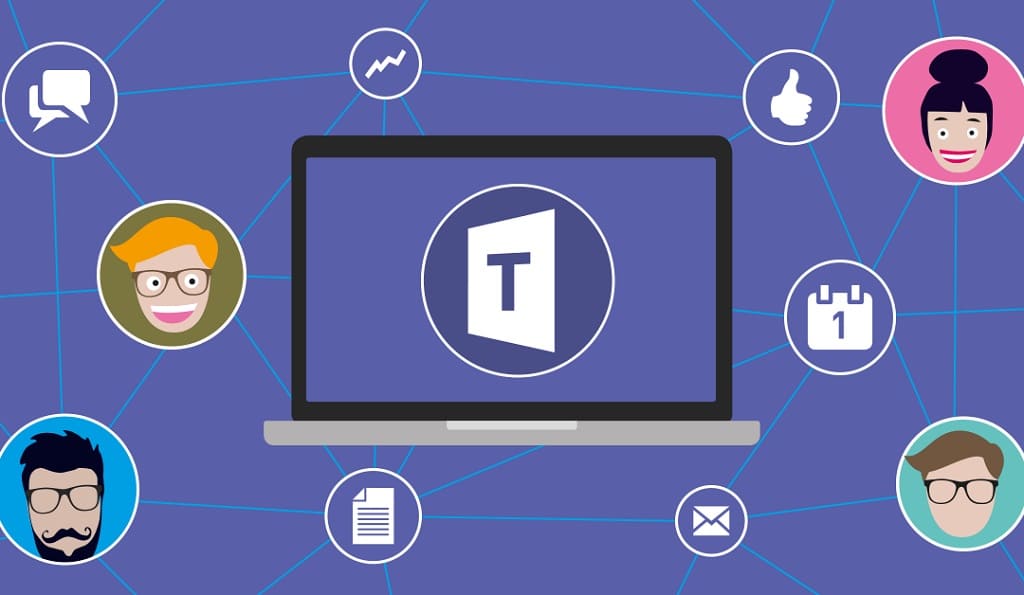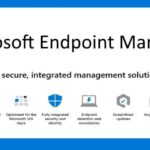Microsoft Teams roundup Build 2020.
Making it easier to build and publish apps
Visual Studio and Visual Studio Code Extension for Teams
With the new Visual Studio and Visual Studio Code Teams extension, developers can use the power and familiarity of these tools to quickly build project scaffolding, configure features, create app package manifest and setup hosting, validate app package manifest, and start the app publishing process (for yourself, to your organization’s catalog, or to the Teams app store). Visual Studio Code extension is now available in public preview. Visual Studio extension coming soon!
Bringing low-code bots to Teams, with Power Virtual Agents
We are partnering with the newest component of the Power Platform – Power Virtual Agents, which is a low-code chatbot platform. There are a number of new features that are rolling out over the coming months that will make it easier to create and manage low-code chatbots from within Teams and more streamlined for end users to use Power Virtual Agents bots in Teams. These new features are:
- Bot Template: FAQ bot template available in GitHub
- Single sign-on: Power Virtual Agents bots will be available, removing the need for users to sign in again when using a Power Virtual Agents bot in Teams
Simplified Power Apps and Power Virtual Agents “Add to Teams”
We are introducing a new streamlined approach for adding custom solutions to Teams from Power Apps and Power Virtual Agents. Coming soon, Power Apps makers will be able to click a single “Add to Teams” button in Power Apps, which will push the app to the Teams app store. 相似地, the process of adding low-code bots from Power Virtual Agents will be simplified, so developers can spend more time building and less time deploying.
Enhanced workflow automation with Power Automate + 团队
There are several new Power Automate triggers and actions built specifically for Teams to unlock custom message extensions, allow for automated @mentioning, and provide a customized bot experience. 此外, to make the process of building automation even easier and more relevant, we are rolling out new business process scenario templates built for Teams. When users create a new flow, they will see these templates when they select the “Create from Template option.”
New Shifts + Power Automate actions
There are new actions available via Power Automate so that developers can take information from Shifts and create customized workflows with other apps or perform operations at scale. For example, gathering insights from Shifts such as requests or schedule details and then using this information in other app workflows. Learn more here.
Improved Power BI sharing to Teams
To help organizations lead data-driven conversations, we have made it even easier to share Power BI reports to Teams – simply select the report to share and click the new “Share to Teams” button in Power BI. You’ll be prompted to select the user or channel to send the report to, which will automatically be posted to the conversation.
此外, users can now copy individual charts in a Power BI report, and when they are pasted to a Teams conversation, the chat will include a rich thumbnail preview of the chart, as well as an adaptive card allowing users to take actions on that chart.
Activity feed notifications for apps
Coming soon to beta, the new activity feed notifications via the Microsoft Graph API gives you a new and simpler way to send app notifications to users across devices. You’ll enjoy the ability to customize and control the notification experience – everything from the notification structure, to what is surfaced to the user after they click the notification.
Granular Permissions
We’re pleased to announce the general availability of 24 new granular permissions for the Teams Graph APIs – giving developers more flexibility and granularity. With granular permissions, developers can now narrow the app’s access and scope to team data as opposed to all team data.
Mobile device capability for apps
Developers will soon be able to connect native mobile device capabilities to their apps, such as camera, location and microphone, empowering developers to extend their Teams user experience to meet specific needs.
New Microsoft Graph APIs for subscribing to notifications for new app messages
Using the Microsoft Graph API, we’ve provided developers capabilities to create subscriptions for different event types, such as new/edited/delete messages, replies, reactions, as well as to all or specific channels and chat threads – allowing apps to refresh when new content is available. These are great for development of data loss prevention (DLP) and safety apps.
New Teams Graph APIs in v1.0
Coming soon, we have some new Teams Graph APIs coming to the v1.0 endpoint that you’ll be able to explore soon. You’ll soon be able to take advantage of capabilities including sending channel messages and replies (including attachments), finding the general channel without assuming it’s titled general, and lastly finding the SharePoint folder for a channel without assuming folder has same name as channel itself.
These APIs, combined with other Teams and Cloud Communications APIs support our new Connected Contact Center and Compliance Recording ISV partner certification programs. Learn more about our contact center and compliance recording integrations, including the current group of partners that are ready to engage customers for each solution area.
Graph APIs for Shifts
APIs give developers the flexibility to customize the Shifts experience, making it extensible to integrate with any other external workforce management, including their own custom workforce management systems (small businesses). Bringing together a workforce management system and Teams enables customers to leverage logic on the backend, and make Teams the user-friendly, front-end experience.
App Studio Update (v1.4.0)
With the latest update (v1.4.0), App Studio now has new enhancements such as, support for app manifest schema 1.6, “advanced section” in app details to easily support advanced features, app package validation tool to run tests that extend outside the basic schema validation, and better error handling with bot framework connection with user guidance on how to perform same actions in the bot framework web portal. This is generally available today.
Improving IT Admins’ ability to manage apps
Streamlined process to manage apps
IT admins will be able to leverage a streamlined process to manage – review, approve & publish custom apps directly from the Teams Admin Center.
New 3rd party subscription purchase experience
A new 3rd-party subscription purchase experience will enable IT admins to view and purchase subscriptions associated with the 3rd party Teams apps. IT admins can purchase licenses and later pin the app to targeted employees right from within the Teams Admin Center.
Grant Consent to Graph API Permissions
IT admins will be able to grant consent to Graph API permissions on behalf of the entire tenant for the permissions an app is requesting such as reading information stored in a team or sending an email on behalf of users, be able to see granular permissions and provide resource-specific consent with the ability to install an app to a specific team
New controls to enhance the Teams app discoverability experience
New controls will empower administrators to tailor and enhance the Teams app discoverability experience by installing it for individual users in the overflow menu. IT admins can also surface relevant apps to end users by creating Templates in Teams that come with installed apps in addition to a pre-defined channel structure.
Enhancing end users’ experience
Pop-out apps
Coming later this year, end users will be able to ‘pop-out’ personal apps. Users will be able to open separate windows for their apps so they can work while easily accessing their team chats to continue to collaborate. Simply right-click on an app to see the pop out option.
Templates in Teams
Creating a new team? Now you can get started even faster with a variety of templates for common team types. Options will include event management, crisis response, hospital ward and bank branch, just to name a few. Each template comes with pre-defined channels, apps, and guidance on how to utilize and customize it, helping you get the most out of Teams. IT professionals can also create new custom templates for their organization, allowing them to standardize team structures, surface relevant apps and scale best practices. Templates in Teams will roll out in the next few months and appear automatically.
Microsoft Lists in Teams
Microsoft Lists is coming to Teams! Microsoft Lists helps you track information and organize work. List are simple, smart, and flexible, so you can stay on top of what matters most to your team. Track issues, assets, routines, contacts, inventory and more using customizable views and smart rules and alerts to keep everyone in sync. With ready-made templates, you will be able to quickly start lists online, on our new mobile app, and directly from within Microsoft Teams.
Contextual Search in Microsoft Teams
Find information faster with contextual search in Microsoft Teams. Users will have the ability to search for content in a specific channel or chat by pressing CTRL + F. Search results will only contain messages and files found in the selected chat or channel. This feature is coming soon.
Azure Active Directory Single Sign-On (单点登录)
End users will soon be able to enjoy the benefits of Azure Active Directory Single Sign-On (单点登录) for supported Teams apps on both desktop and mobile. After they’re signed into Teams, end users won’t have to sign in again on apps that integrate with single sign-on. Developers will also enjoy a simplified authentication process through a single API call. We’ll roll out with tabs in general availability soon, followed by bots later this year.
Azure Active Directory Conditional Access
Coming soon, this capability will enable end users to run apps and tabs even if their IT admin has set up conditional access policies requiring the use of a trusted device. Website tabs on Windows that use Azure AD will automatically sign you in and support device-specific conditional access policies.
Resource-Specific Consent
This capability will empower Team owners to install an app for their specific team and restrict the app’s scope and access to data to only that one team. This allows team owners to make decisions versus needing the global IT admin to provision access. This is coming soon to preview.
More powerful Adaptive Cards for Teams
Develop a richer and more customizable experience using Adaptive Cards 1.2 in Teams on desktop and mobile. Highly requested features such as @mentions support within cards, allow the ability to direct a user’s attention to cards that are relevant to them – providing you an enhanced notification and engagement capability for your app. RichText Blocks allow you greater flexibility in designing the look and feel of the cards. These are available in general availability and ready for you to explore today.
Adaptive Cards with incoming webhooks are another highly requested Teams features. Full support for Adaptive Cards, including support for bot framework cards (hero, profile, lists, 还有更多) will be available in preview coming soon.
Messaging actions for mobile
Coming soon, we will have message action support for mobile will be coming soon to preview. Message actions can be triggered directly from a message and can be used to enable scenarios such as creating tasks or work items following a discussion within a chat or channel.
Using Teams to Connect with External Audiences
Schedule virtual appointments with Bookings in Teams
团队, which enables HIPAA compliance and is HITRUST certified, will now allow organizations to schedule, manage and conduct business-to-consumer meetings, through the new Bookings app integration. Organizations can now manage multiple departments and staff in a single scheduling experience and can easily schedule virtual appointments with external attendees, such as healthcare virtual visits with patients, job candidate interviews, customer service appointments in retail, and student office hours. In addition, with the Microsoft Graph API organizations can integrate both scheduling and meeting-join links into their unique workflows and existing applications like electronic health records systems in healthcare.
NDI for Teams and Skype TX Interoperability
Broadcast events and studio productions from a virtual stage in Teams! We are introducing New Network Device Interface (NDI) support and Skype TX interoperability for Microsoft Teams, which offers a more advanced set of production options for public or private customized, high-scale broadcasts. Coming soon, NDI for Microsoft Teams transforms a Teams meeting into a virtual stage by converting each participant’s video into a discrete video source that can be used in the production tool of your choice, OBS, Wirecast, Xsplit, StreamLabs and many more. This functionality enables you to use Teams meetings in other ways, including hosting a professional broadcast.
Meanwhile new interoperability of Teams with Skype TX devices—the devices commonly used in broadcast production today—enables production teams to connect in 1:1 calls for interviews and newscasts with professional capabilities including caller queuing and connection quality management.





















